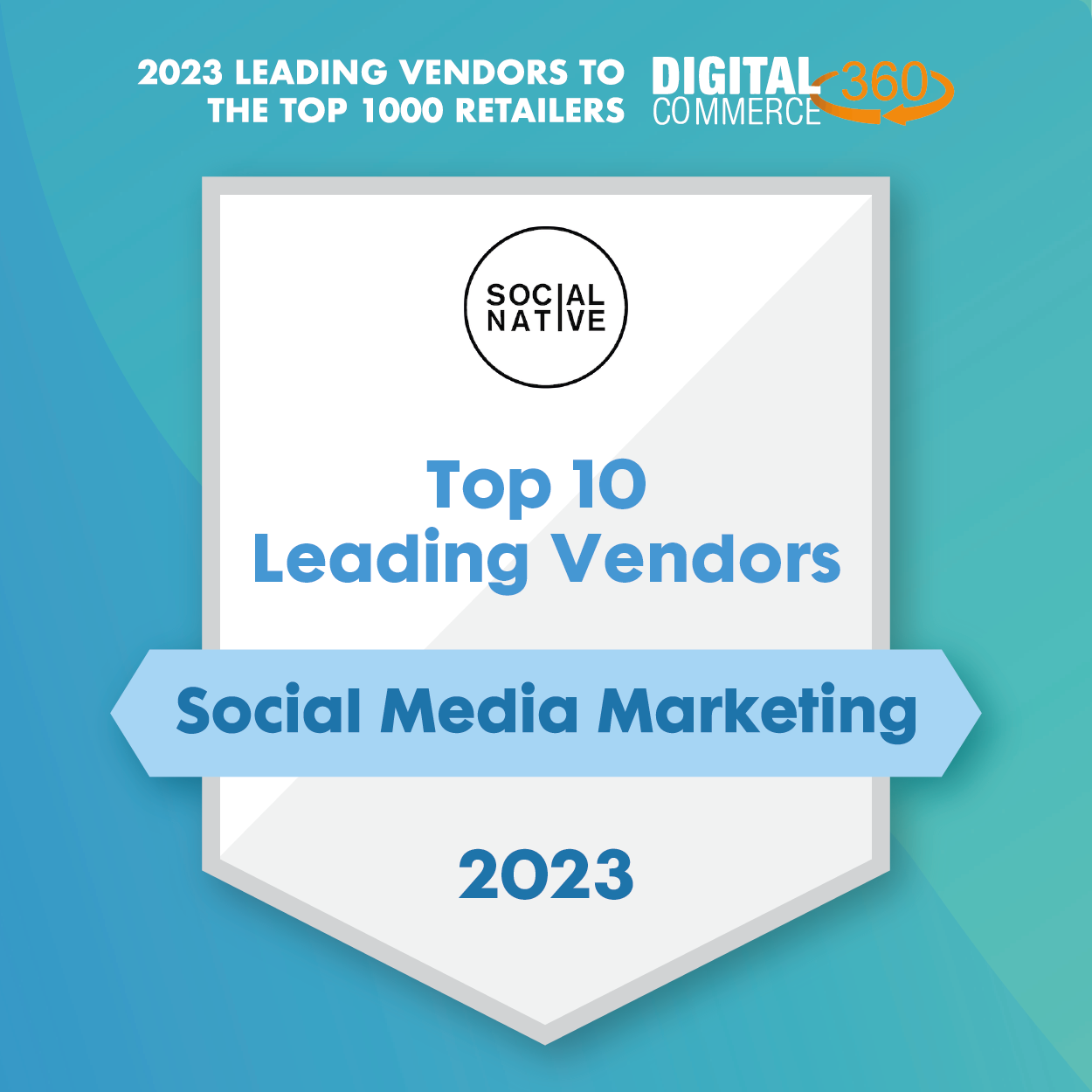In the last years, mobile and social ubiquity have profoundly impacted the brand-consumer relationship. Driven by the adoption of digital technology and mobile devices, the customer journey is no longer a linear experience —moving from awareness to consideration and finally to purchase.
Nowadays, shoppers are shifting in and out of various phases, across channels, and expect brands to keep up with them. Keep up with content that fits with what they want, when they want it, and in the format for where they are choosing to engage.
Additionally, consumers have their own voices on social channels and search for more authentic, honest, and trustworthy sources of information. Content posted by their peers is used for product inspiration and purchase validation.
This paradigm puts marketers under a great deal of pressure to generate a seemingly overwhelming quantity of valuable, resonant, authentic, and optimized content to fill each channel.
User-generated content is key for brands looking to convey the authenticity that consumers crave and a competitive advantage for businesses to cultivate trust and increase sales.
In this article, we’ll share recommendations for UGC collection, so you can collect relevant user-generated content effectively. We’ll cover how to:
- Establish your UGC collection strategy
- Handle UGC rights management
- Promote UGC across all relevant channels
1. Establishing your UGC collection strategy
This first step is defining how to use @mentions, tags, and hashtags in combination to gain a more holistic understanding of your brand’s social engagement.
Let’s start by defining each term:
- Mention. It’s a direct call out to your brand, included within the post description or written in the comment section.
- Tag. It’s added to the actual picture or video content, letting others know who’s in it. Tagged users are notified.
- Hashtag. It’s a label that makes it easier to find information about a theme or topic. It encourages users to explore similar content that catches their eye.
Mentions and tags should be the primary collectors when looking to capture the best user-generated content. Why?
- Hashtags aren’t unique, but handles are. Using only hashtags can lead to capturing a high volume of spam content, especially if hashtags are too generic.
- Mentions and tags are more precise and trustworthy indicators to identify consumers that want to engage in conversation with a brand.
We recommend that you combine your @mention (or tag) with a #hashtag, as to include/exclude rules, to convey a certain tone, differentiate your campaigns, classify collected content, and gain a better understanding of your social engagement.


Choosing your hashtags
To keep your content relevant, bear in mind the following best practices while determining which hashtags you’ll be using as part of your UGC collection strategy:
Do
- Take time to research the usage and popularity of your hashtag prior to implementation. You can even do some testing to determine what hashtag works best.
- Create a simple and easy-to-spell hashtag.
- Go for an appealing, unique and memorable hashtag.
- Use title case when necessary to make the hashtag more easily understood (i.e. #WeLoveBrandX).
- Create one or two evergreen hashtags to live alongside your brand indefinitely. Keep them consistent with your brand image.
- Create hashtags for specific campaigns or marketing programs, like contests and product launches (i.e. #BrandSpringContest).
Don’t
- Use generic hashtags: you’ll lose the connection to your brand and open your UGC collection to a high volume of spam (i.e. #LoveIt or #Happiness).
- Use ambiguous hashtags.
- Use hashtags that have different meanings in other languages.
- Use too many hashtags at a given time.
In order to really connect with your audience on social media, it is crucial to teach users how to use your @mention together with the specific hashtags you have chosen —whether they are evergreen hashtags or campaign-focused hashtags.
We’ll talk more about that later on.
2. Handling UGC rights management
Although content on social media is publicly available, it is subject to copyright protection.
When a brand comes across user-generated images or videos and would like to use it in their own social account, e-commerce or any other marketing channel, it should secure clear, straightforward consent from the owner.
Let’s review a few key aspects of social content, consent and usage rights:
- The creator of any photo or video owns the copyright and the “bundle of rights” that comprise copyright for that piece of content.
- Photos that show an identifiable person also implicate the subject’s right of publicity. This legal term applies to UGC and protects individuals from having their name, photo, likeness, or voice used in a commercial way without their consent.
- Marketers need explicit permission from the creator, and sometimes from the subject, of a photo or video to display, reproduce, distribute and use it commercially.
Having a strategy for acquiring explicit rights enables businesses to take advantage of UGC’s ability to drive interest and boost sales while respecting the rights of copyright holders.
How it works
Consumers who take the time to post high-quality photos with your products and use your brand handle and hashtag are probably already big fans. Asking them for rights in a friendly, easy-to-understand way is the best tactic to protect their relationship with your brand, and strengthen their affinity even more.
To get clear and direct user consent, you need to reach out to the consumer, let them know you appreciate the image and express that you would like their permission to use their content in future marketing efforts. If a consumer declines, you must respect their decision.
But, how do you get user consent when you are collecting hundreds of thousands of UGC? Getting timely direct consent can be a real challenge if you don’t have the technology to do it at scale.
Social Native’s Rights Management solution provides brands with a simple process to gain written explicit consent from users to repurpose effective UGC in all their marketing strategies.
Our workflow streamlines the UGC collection & management process and saves brands time and effort. In just a few steps, brands can:
- Personalize rights requests messages
- Request rights in bulk, with smart batches
- Keep track of the rights status of collected social content
- Keep records of the creator’s approval
- Obtain rights automatically from influencers and brand ambassadors


3. Promoting UGC across all relevant channels
Now that you’ve defined your collection strategy, it’s time to promote it to gain traction.
If you want to drive interest and generate a wealth of quality content, you need to think beyond social, and truly integrate your @mention and hashtag as part of your brand DNA.
Ensure there is a clear call-to-action to share content in all your messaging across both digital and offline marketing channels, including:
- Social media
- Email newsletters
- Shipping Inserts and packaging
- Brand website, landing pages and microsites
- Apps
- Paid search
- In-store locations
- Television
- Outdoor
- Business Cards


Subway Station


Store


In addition to promoting your @mention and hashtag, guide the conversation to inspire your consumers to share high-quality photos and UGC videos:
- Incentivize followers by telling them they could be featured.
- Invite buyers to transform from average fans to brand content creators.
- Provide advice around the type of content that you wish to capture. Don’t be afraid to be prescriptive: include a few basic pointers.
- Leverage existing consumer-generated content as examples of your “ideal” content, to show what you’re looking for.
The key is to maintain consistency and build recognition. The more content is shared, the more related users will participate, which will expand the overall effectiveness of your UGC collection strategy.
4. Extra tip: Tapping into influencer content
Still not getting the content that you’re looking for from your consumers?
Consider activating influencers and creators to support brand initiatives and supplement consumer-generated content. This can help to better connect your brand and products to the aesthetic your audience wants.
Here are some of the many reasons why you should consider boosting your UGC collection strategy with creators and influencers:
- Influencers are able to generate high-quality and relevant content.
- With creators you can produce content at scale, in a manner that is more efficient than traditional brand-owned creative.
- Influencers work proactively to build loyal followings.
- Influencers usually have higher engagement rates.
- Creator content allows brands to retain the authenticity of user-generated content, but offer some control over brand guidelines.
Conclusion
Today’s consumers demand personalized experiences and frictionless buying opportunities from brands.
To fit the new paradigm, marketers have to change their strategies and craft compelling content to capture attention and drive action.
User-generated content is a cost-effective strategy to create content for brands looking to reach their target audience and drive sales in this competitive digital space.
From all of us at Social Native, we’re hopeful this article is useful and will set you in the direction of more meaningful, valuable, and authentic marketing experiences for your consumers.











































